Exploring the world’s 15 oldest languages offers a unique lens to view human history. These ancient tongues reveal how societies communicated, shared ideas, and evolved over millennia. Languages like Sanskrit, which influenced many others, and Sumerian, with its pioneering cuneiform writing, show the powerful role language plays in shaping culture. This journey through time not only deepens our understanding of history but also challenges us to think about how languages adapt as new cultures and technologies emerge.
Top 15 Oldest Languages
Many old languages have disappeared over time, but here are some of the oldest ones still known today. Sumerian, from around 3100 BCE in Mesopotamia, is the oldest written language we know.
1. Sumerian
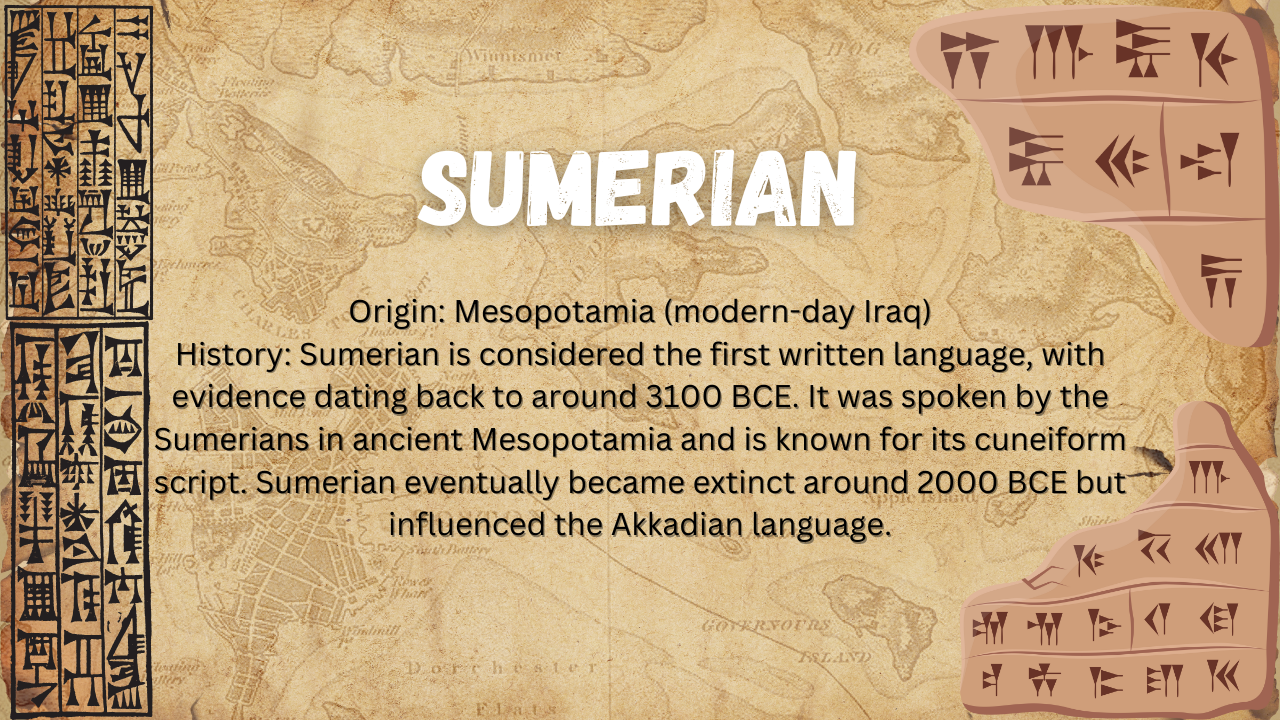
- Origin: Mesopotamia (modern-day Iraq)
- History: Sumerian is considered the first written language, with evidence dating back to around 3100 BCE. It was spoken by the Sumerians in ancient Mesopotamia and is known for its cuneiform script. Sumerians eventually became extinct around 2000 BCE but influenced the Akkadian language.
2. Egyptian
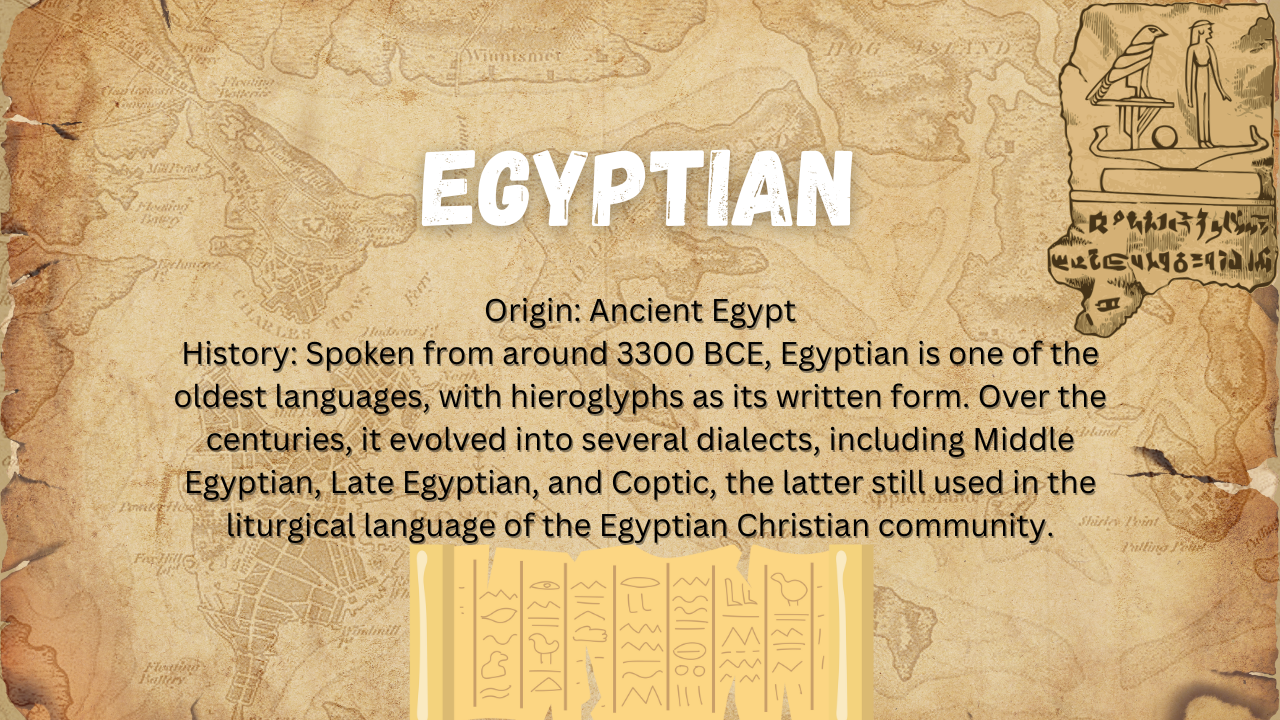
- Origin: Ancient Egypt
- History: Spoken from around 3300 BCE, Egyptian is one of the oldest languages, with hieroglyphs as its written form. Over the centuries, it evolved into several dialects, including Middle Egyptian, Late Egyptian, and Coptic, the latter still used in the liturgical language of the Egyptian Christian community.
3. Akkadian
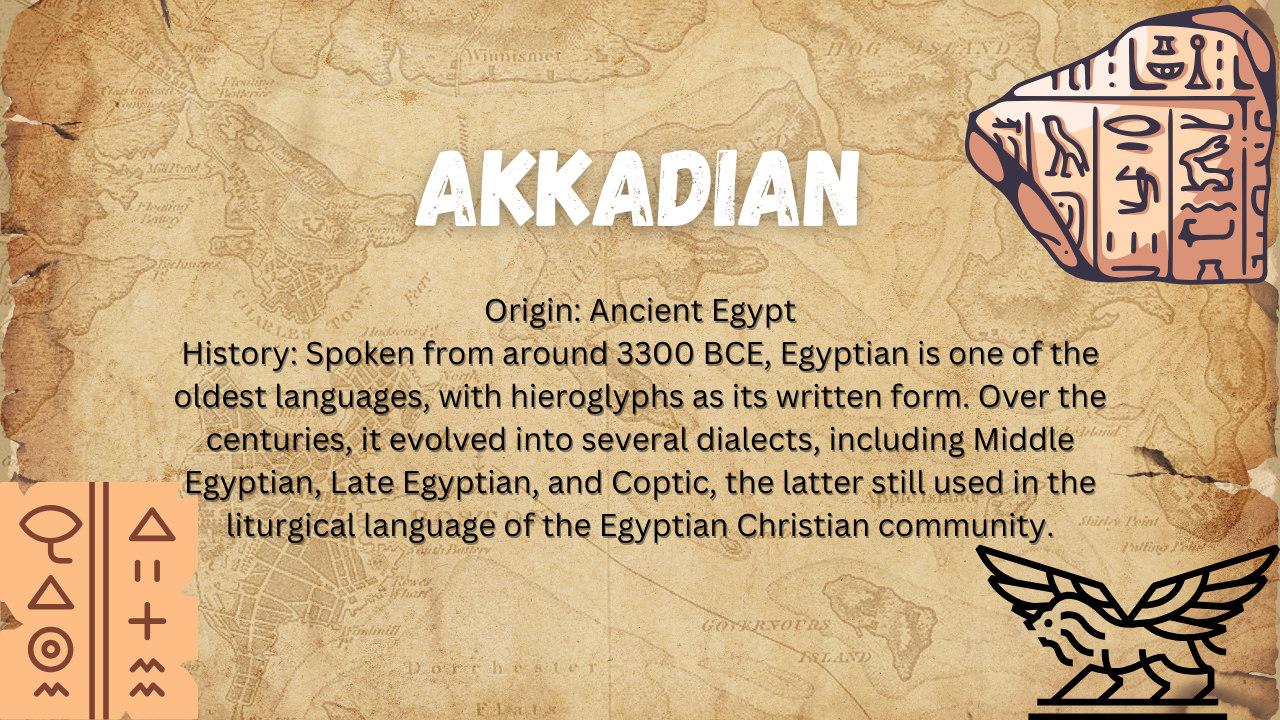
- Origin: Mesopotamia
- History: Akkadian, originating around 2500 BCE, was the first Semitic language. It was spoken by the Akkadian Empire and later became the lingua franca of the Ancient Near East. It is written in cuneiform and eventually split into Babylonian and Assyrian dialects.
4. Tamil
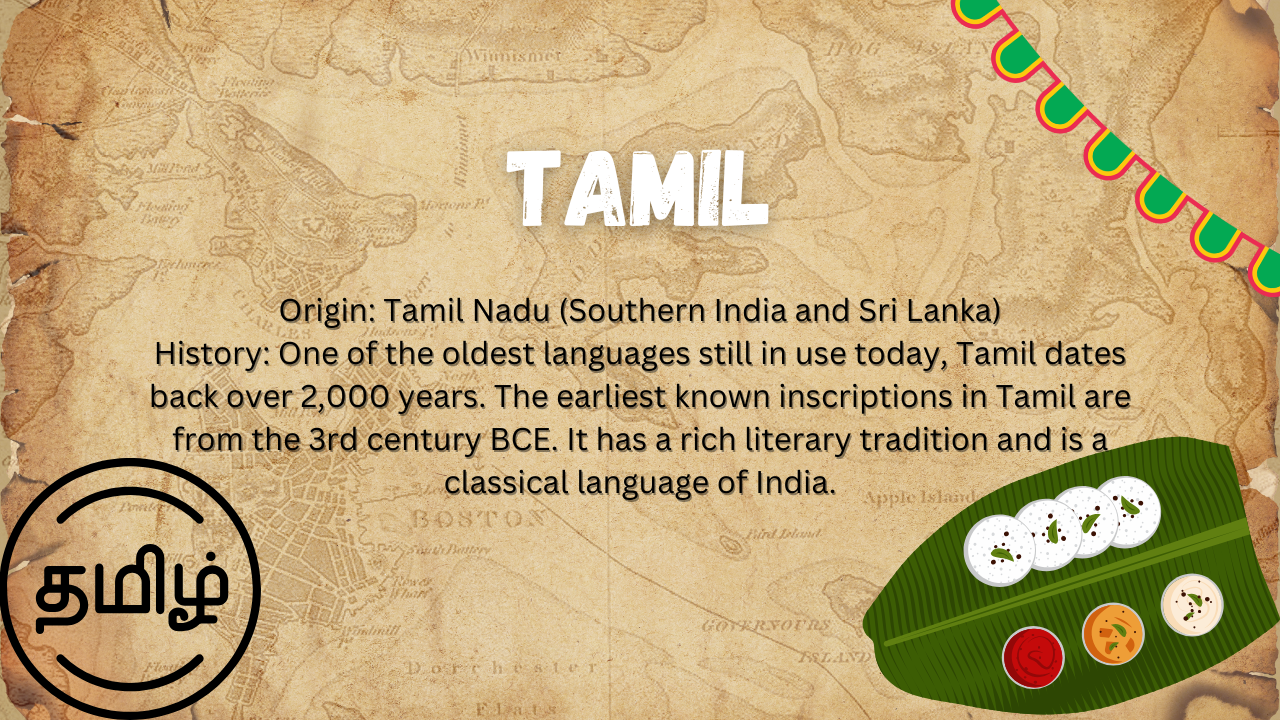
- Origin: Tamil Nadu (Southern India and Sri Lanka)
- History: One of the oldest languages still in use today, Tamil dates back over 2,000 years. The earliest known inscriptions in Tamil are from the 3rd century BCE. It has a rich literary tradition and is a classical language of India.
5. Sanskrit
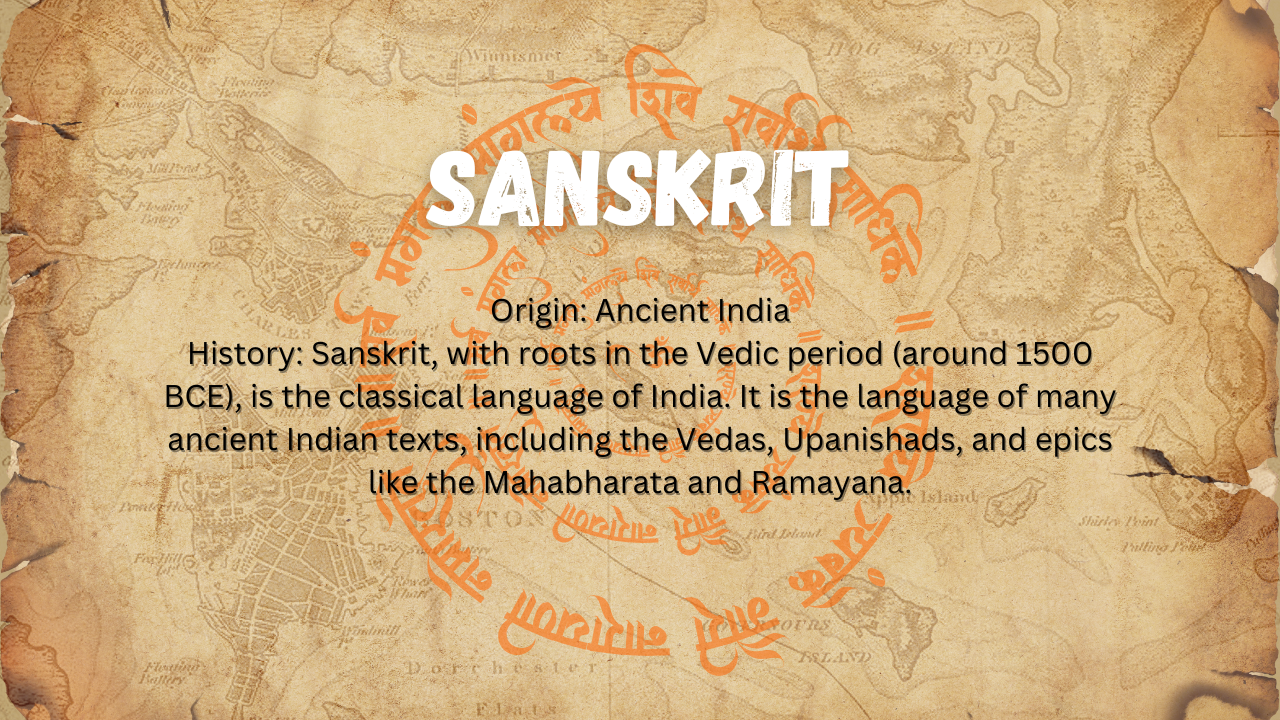
- Origin: Ancient India
- History: Sanskrit, with roots in the Vedic period (around 1500 BCE), is the classical language of India. It is the language of many ancient Indian texts, including the Vedas, Upanishads, and epics like the Mahabharata and Ramayana.
6. Hebrew

- Origin: Ancient Israel
- History: Hebrew is an ancient Semitic language spoken by the Israelites, dating back to around 1200 BCE. It evolved through several stages, from biblical Hebrew to modern Hebrew, which was revived in the 19th and 20th centuries as the official language of Israel.
7. Greek
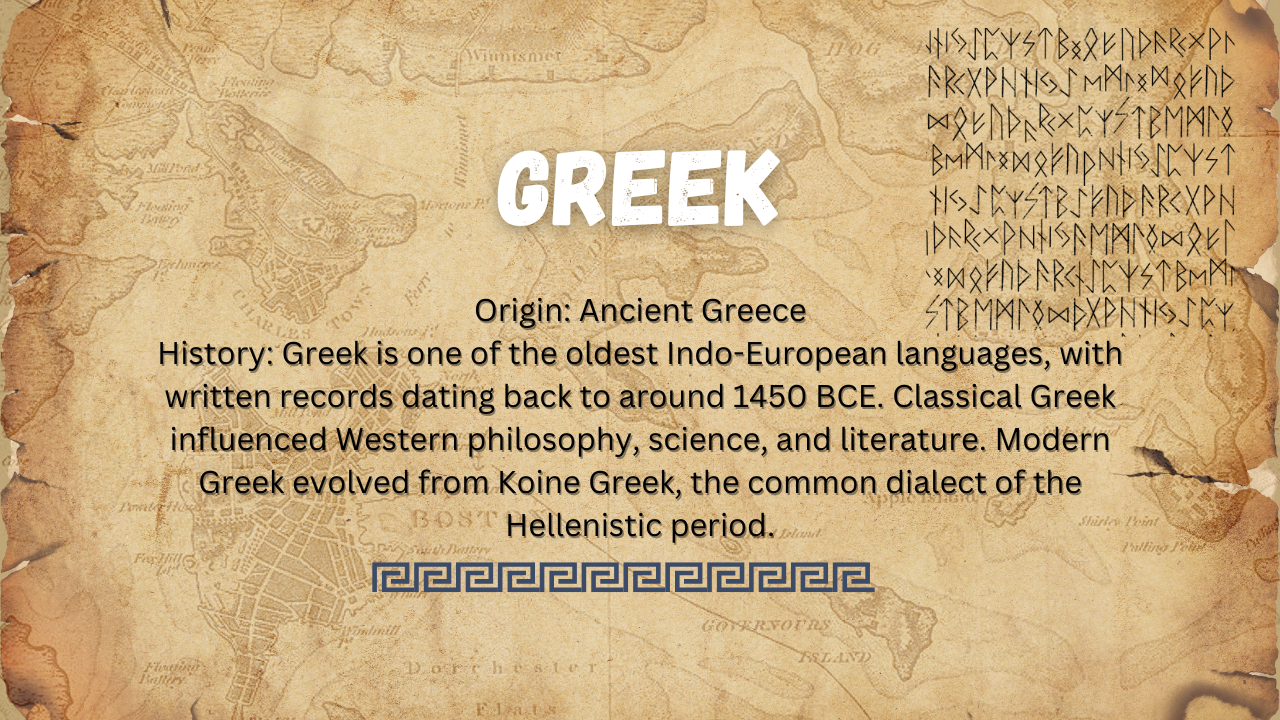
- Origin: Ancient Greece
- History: Greek is one of the oldest Indo-European languages, with written records dating back to around 1450 BCE. Classical Greek influenced Western philosophy, science, and literature. Modern Greek evolved from Koine Greek, the common dialect of the Hellenistic period.
8. Chinese
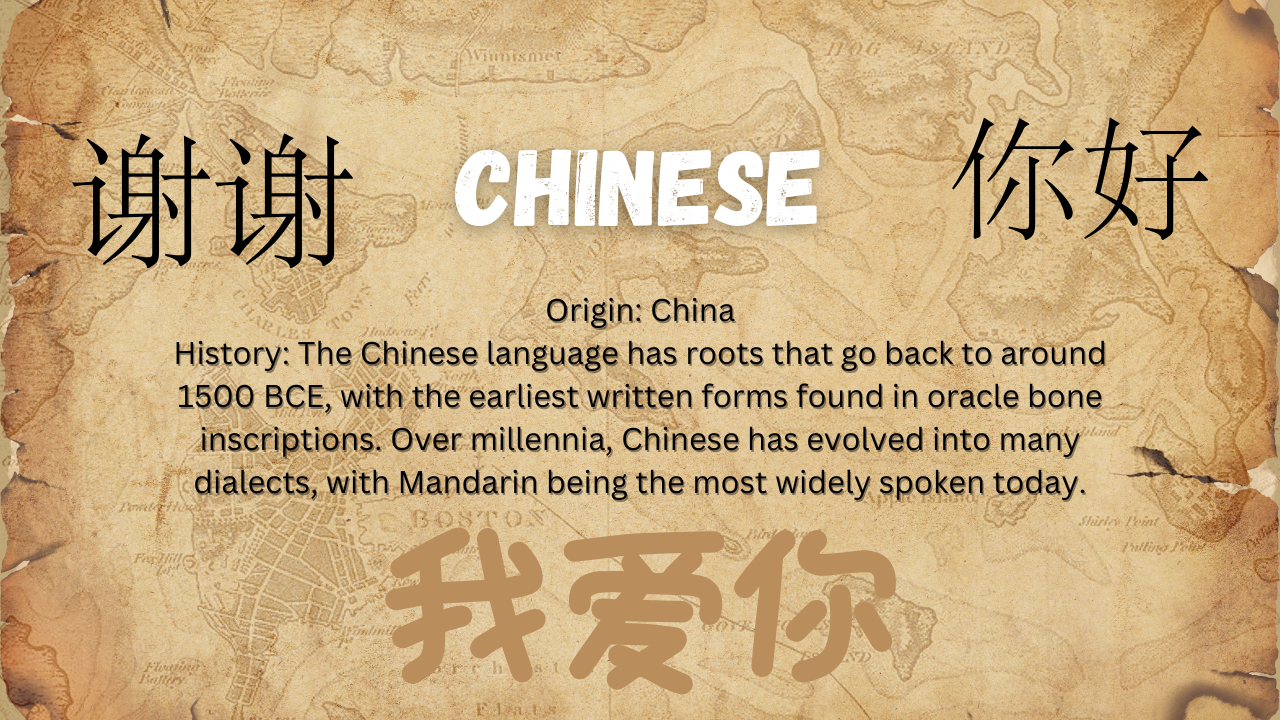
- Origin: China
- History: The Chinese language has roots that go back to around 1500 BCE, with the earliest written forms found in oracle bone inscriptions. Over millennia, Chinese has evolved into many dialects, with Mandarin being the most widely spoken today.
9. Aramaic
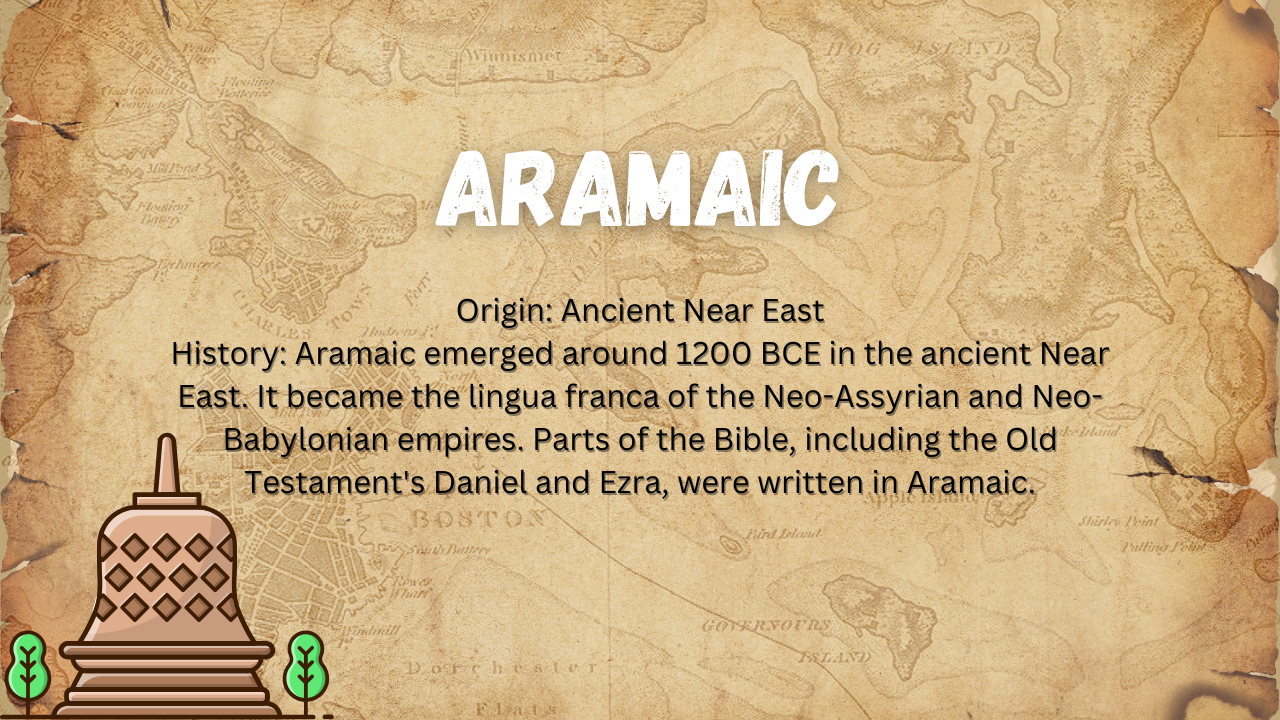
- Origin: Ancient Near East
- History: Aramaic emerged around 1200 BCE in the ancient Near East. It became the lingua franca of the Neo-Assyrian and Neo-Babylonian empires. Parts of the Bible, including the Old Testament’s Daniel and Ezra, were written in Aramaic.
10. Prakrit
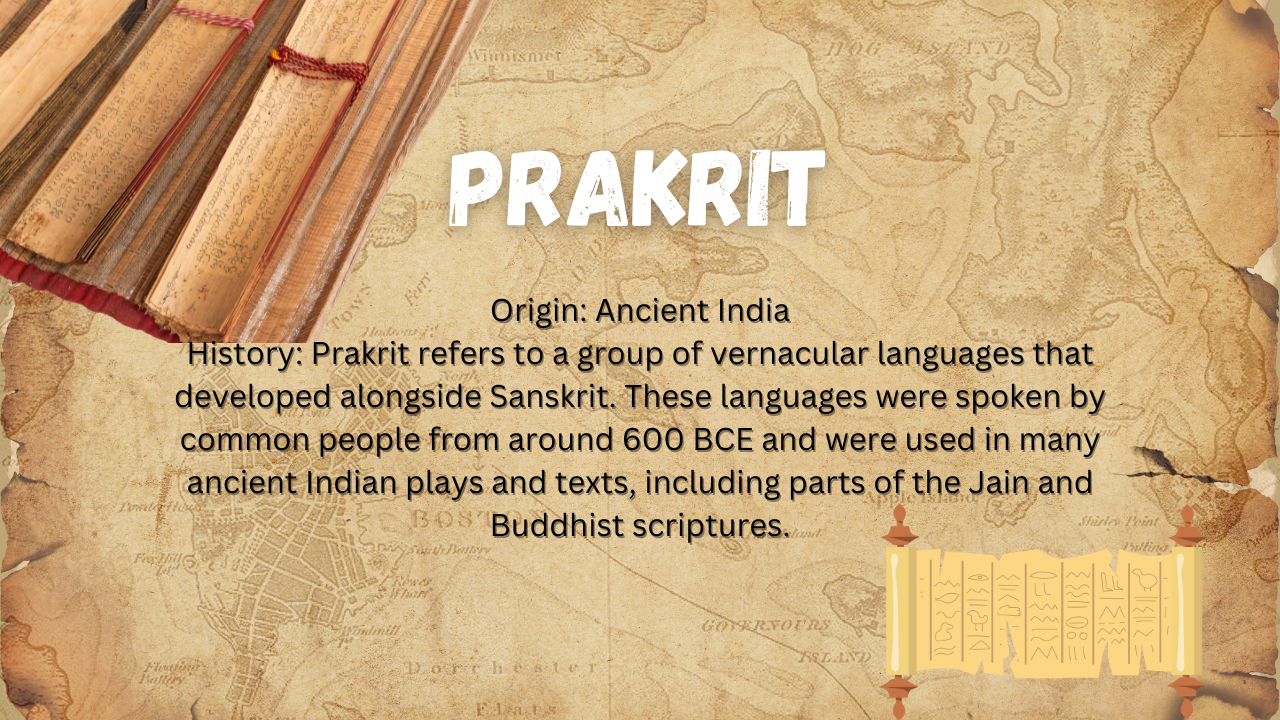
- Origin: Ancient India
- History: Prakrit refers to a group of vernacular languages that developed alongside Sanskrit. These languages were spoken by common people from around 600 BCE and were used in many ancient Indian plays and texts, including parts of the Jain and Buddhist scriptures.
11. Latin
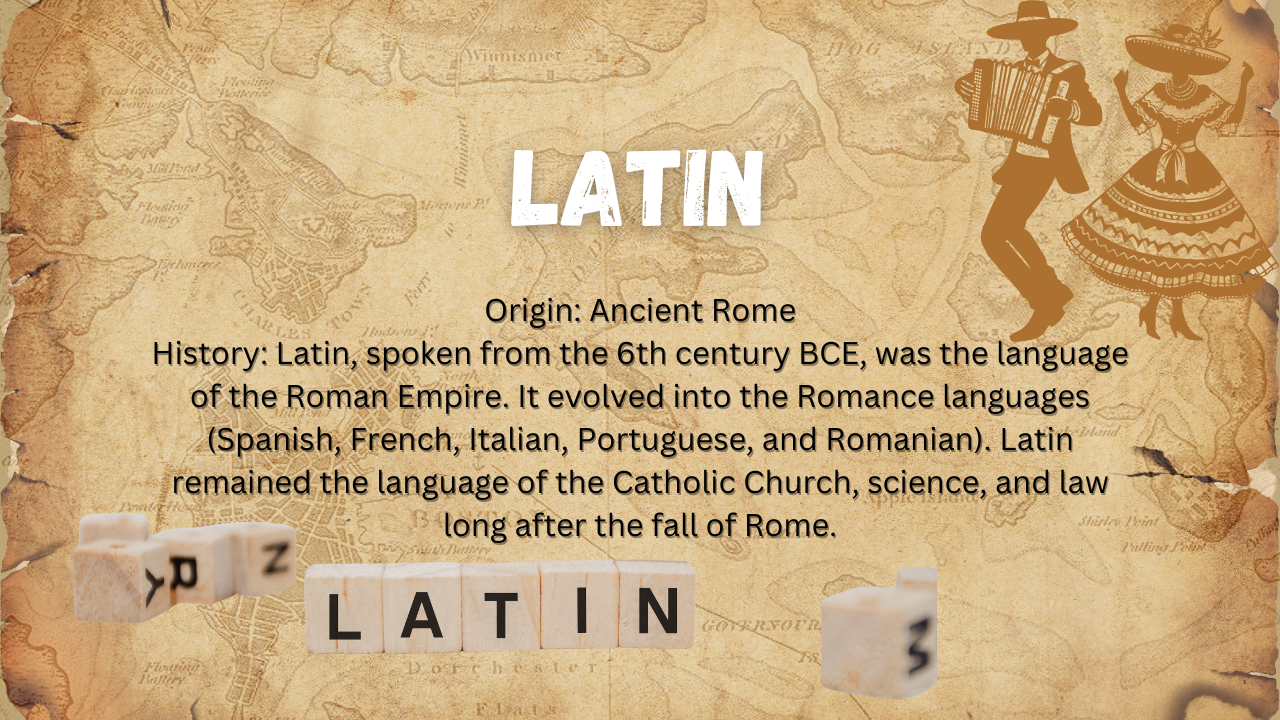
- Origin: Ancient Rome
- History: Latin, spoken from the 6th century BCE, was the language of the Roman Empire. It evolved into the Romance languages (Spanish, French, Italian, Portuguese, and Romanian). Latin remained the language of the Catholic Church, science, and law long after the fall of Rome.
12. Phoenician
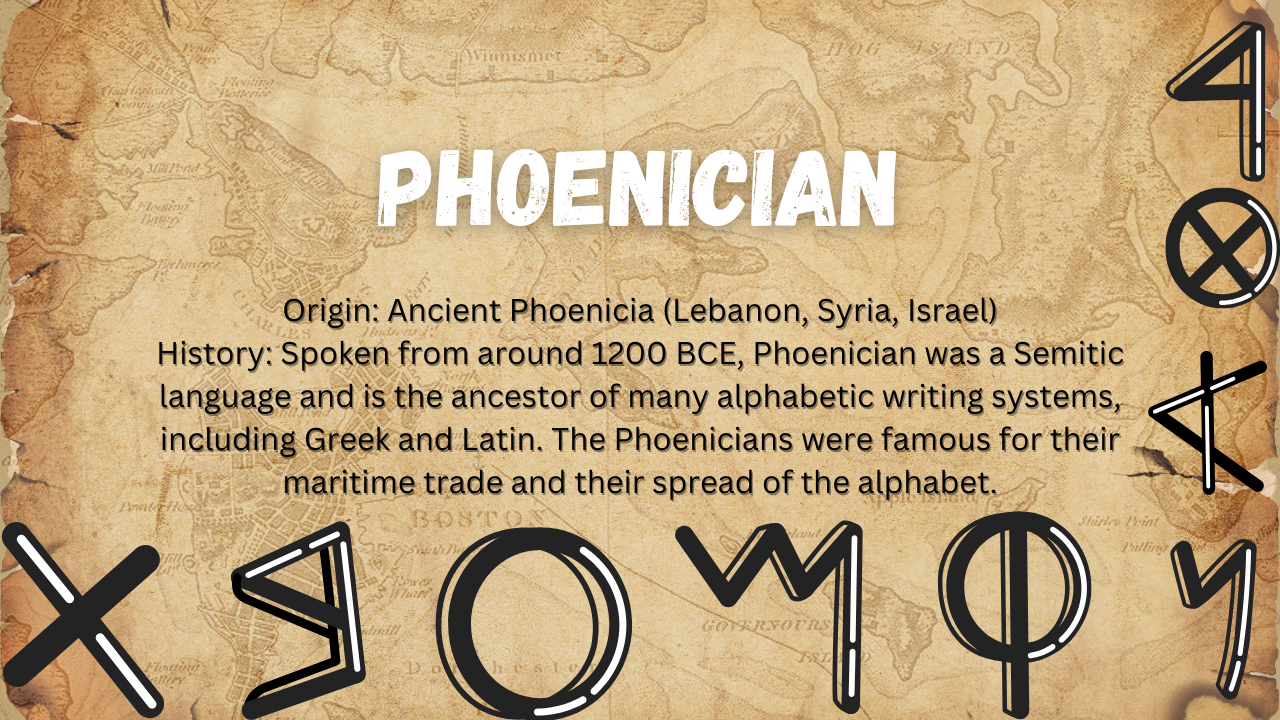
- Origin: Ancient Phoenicia (Lebanon, Syria, Israel)
- History: Spoken from around 1200 BCE, Phoenician was a Semitic language and is the ancestor of many alphabetic writing systems, including Greek and Latin. The Phoenicians were famous for their maritime trade and their spread of the alphabet.
Also Read: What Languages Are Spoken In India? An Ultimate Guide
13. Hittite
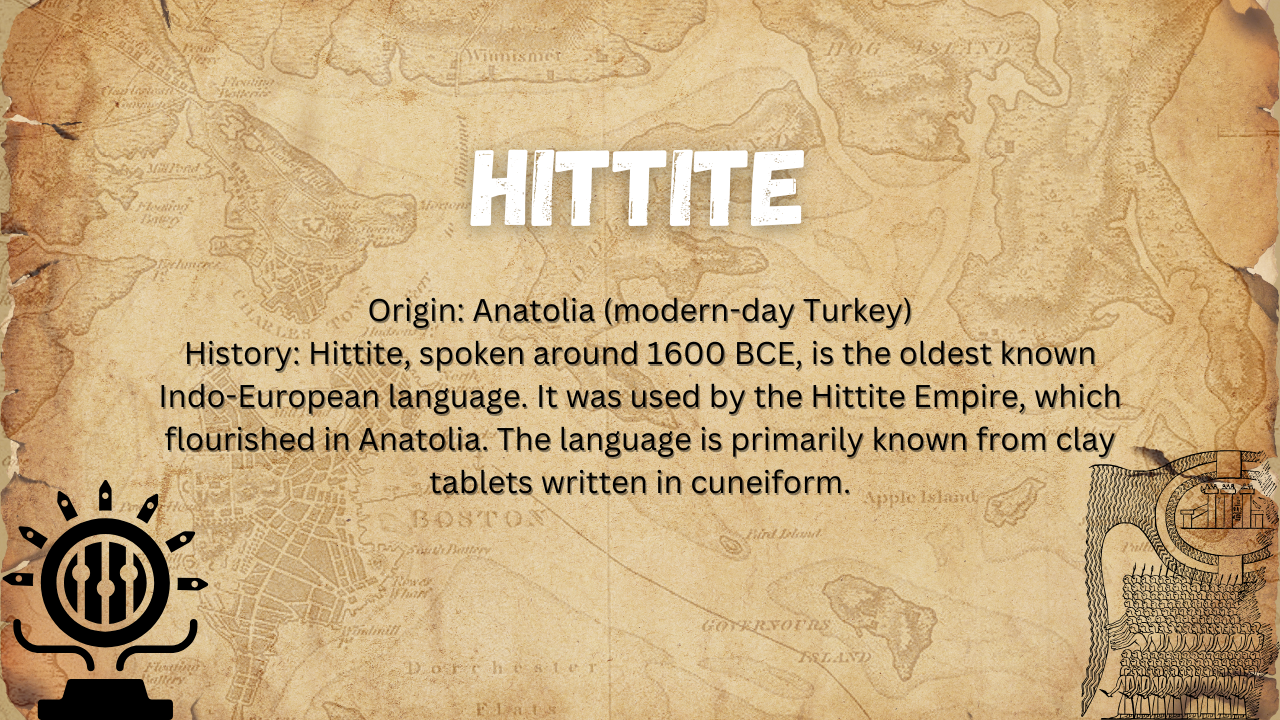
- Origin: Anatolia (modern-day Turkey)
- History: Hittite, spoken around 1600 BCE, is the oldest known Indo-European language. It was used by the Hittite Empire, which flourished in Anatolia. The language is primarily known from clay tablets written in cuneiform.
14. Basque
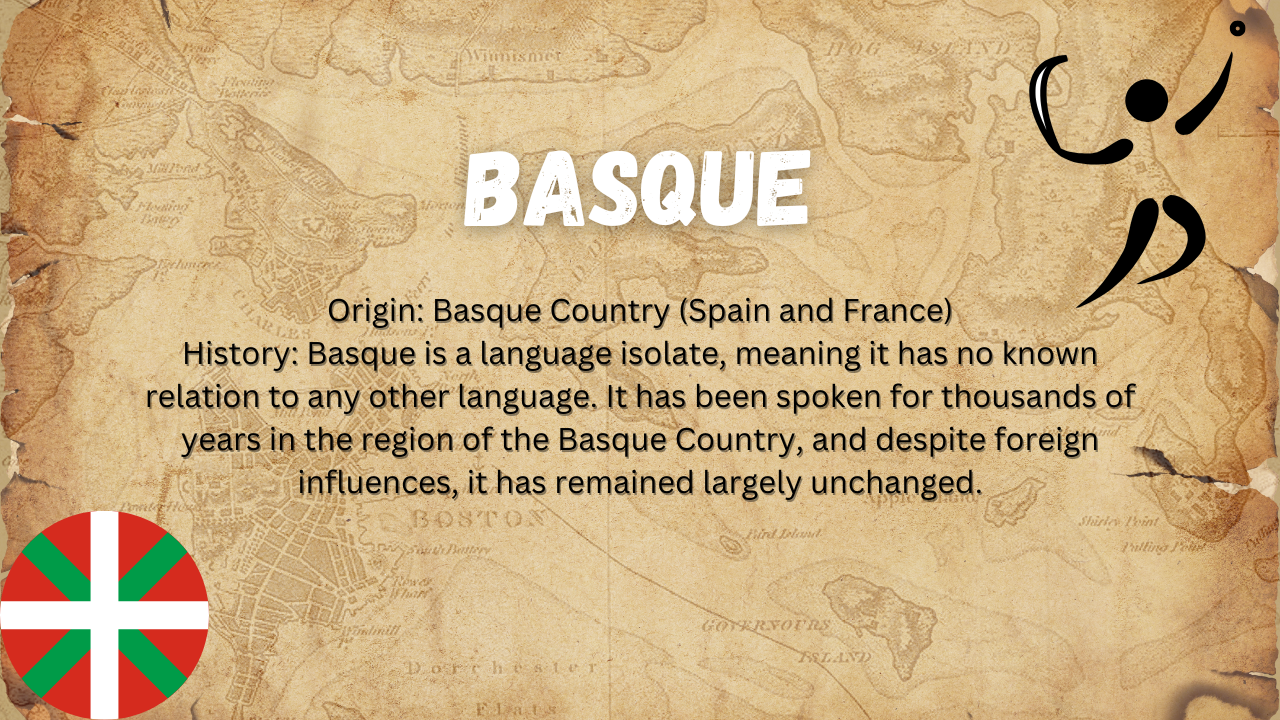
- Origin: Basque Country (Spain and France)
- History: Basque is a language isolate, meaning it has no known relation to any other language. It has been spoken for thousands of years in the region of the Basque Country, and despite foreign influences, it has remained largely unchanged.
15. Georgian
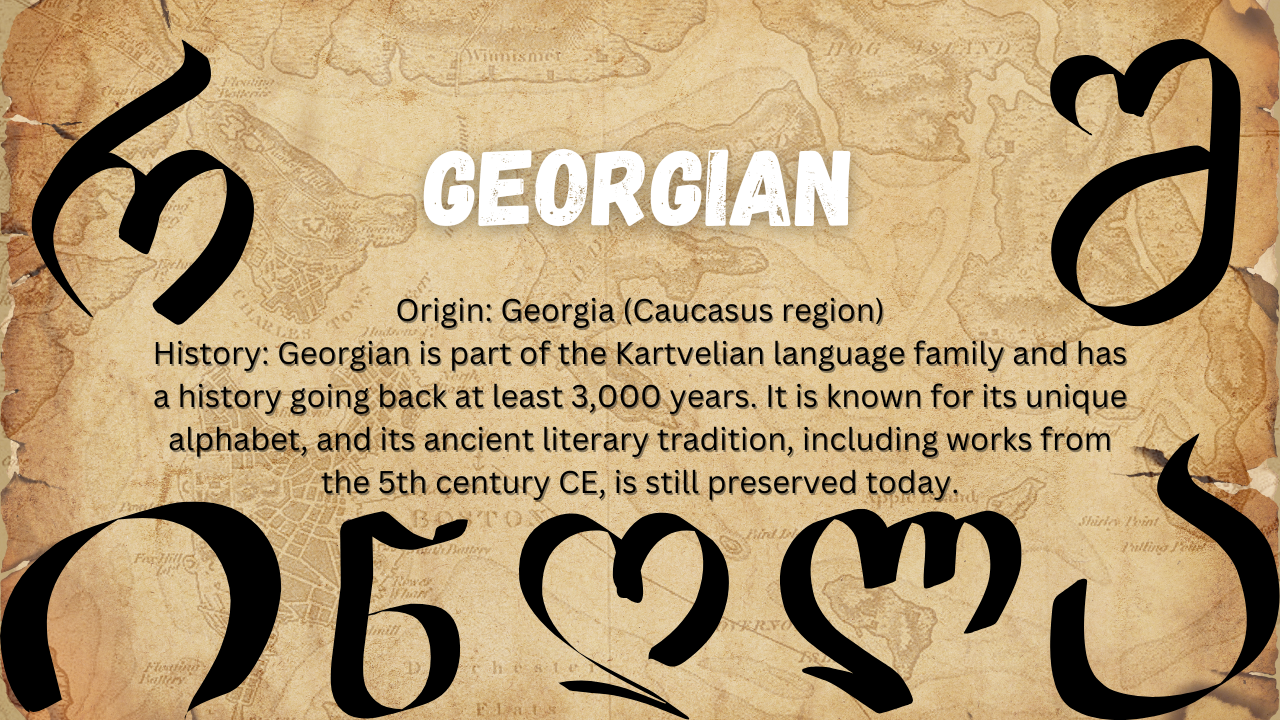
- Origin: Georgia (Caucasus region)
- History: Georgian is part of the Kartvelian language family and has a history going back at least 3,000 years. It is known for its unique alphabet, and its ancient literary tradition, including works from the 5th century CE, is still preserved today.
Conclusion
These old languages don’t just give us a peek into history; they still shape our modern culture, thinking, and how we talk to each other. When we dig into these languages, we find the building blocks of many words and structures we use today. These languages also help keep cultural identities alive, giving people a sense of belonging and connection to their history. Getting to know these ancient languages helps us appreciate our shared human journey and shows us how connected we’ve always been. Keep visiting the Translation Blog to master any language in a few days.

